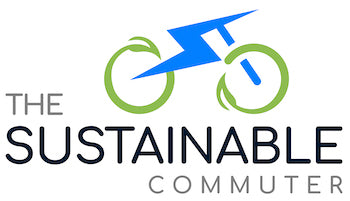
Rethinking Public Transportation: The Path to Energy Efficiency
Share
Introduction
Public transportation plays a crucial role in promoting energy efficiency and reducing greenhouse gas emissions. As we continue to grapple with the impacts of climate change and the need for sustainable solutions, rethinking public transportation has become more important than ever. In this blog post, we will explore the various ways in which public transportation can become more energy-efficient and contribute to a greener future.
Exploring Sustainable Solutions
Transitioning to Electric Vehicles: One of the most significant steps towards energy efficiency in public transportation is the transition to electric vehicles (EVs). Electric buses and trains are becoming increasingly popular as they offer zero-emission transportation options. Companies like [Company Name] are at the forefront of this transition, providing electric buses and charging infrastructure to cities around the world. By replacing traditional fossil-fuel-powered vehicles with EVs, public transportation systems can significantly reduce their carbon footprint and improve air quality in urban areas.
Improving Infrastructure with [Company Name]: Infrastructure plays a vital role in the energy efficiency of public transportation. [Company Name] is a leading provider of sustainable infrastructure solutions for public transportation systems. They specialize in designing and building transit hubs, bus rapid transit (BRT) corridors, and light rail systems that are energy-efficient and promote sustainable travel. By investing in infrastructure improvements, cities can create a seamless and efficient public transportation network that encourages people to choose public transit over private vehicles.
Promoting Alternative Fuels: While electric vehicles are gaining traction, there is still a need for alternative fuels in public transportation. Biofuels, such as biodiesel and ethanol, offer a greener alternative to traditional fossil fuels. These fuels can be produced from renewable sources such as agricultural waste, reducing greenhouse gas emissions and dependence on fossil fuels. Public transportation systems can partner with sustainable fuel companies to incorporate alternative fuels into their fleets, further reducing their environmental impact.
Leveraging Transit-Oriented Development: Transit-oriented development (TOD) is a planning concept that focuses on creating mixed-use, walkable communities around public transportation hubs. By designing neighborhoods that are easily accessible by public transit, TOD reduces the need for private vehicle use and promotes energy-efficient travel options. Sustainable companies like [Company Name] specialize in TOD, creating vibrant communities that prioritize public transportation and sustainable living. By integrating transportation and land-use planning, cities can reduce congestion, promote active transportation, and improve energy efficiency.
Challenges to Overcome
Reducing Energy Consumption: Public transportation systems are energy-intensive, and reducing energy consumption is a significant challenge. However, advancements in technology and infrastructure can help address this issue. Companies like [Company Name] are developing innovative solutions, such as regenerative braking systems and energy-efficient HVAC systems, to reduce energy consumption in public transportation vehicles. Additionally, investing in renewable energy sources, such as solar panels on transit hubs, can further offset the energy needs of public transportation systems.
Cost of Implementation: Implementing sustainable solutions in public transportation can be costly upfront. However, the long-term benefits in terms of energy savings and reduced emissions outweigh the initial investment. Governments and municipalities can explore funding opportunities, such as grants and partnerships with sustainable companies, to help offset the costs of transitioning to energy-efficient public transportation systems. Additionally, public-private partnerships can play a crucial role in driving innovation and making sustainable transportation more accessible and affordable.
Adjusting to Changing Consumer Behavior: Changing consumer behavior is another challenge that public transportation systems must address. In many cities, private vehicle ownership is deeply ingrained, and convincing individuals to switch to public transit can be difficult. Education campaigns, incentives, and improvements in service quality can help shift consumer behavior towards more sustainable transportation options. Sustainable companies can collaborate with public transportation systems to develop marketing strategies and user-friendly apps that make using public transit more convenient and appealing.
Conclusion
Public transportation is a powerful tool in promoting energy efficiency and reducing greenhouse gas emissions. By embracing sustainable solutions, such as transitioning to electric vehicles, improving infrastructure, promoting alternative fuels, and leveraging transit-oriented development, public transportation systems can play a vital role in creating a more sustainable future. However, there are challenges to overcome, including reducing energy consumption, addressing the cost of implementation, and adjusting to changing consumer behavior. By collaborating with sustainable companies and investing in innovative solutions, cities can overcome these challenges and create a public transportation system that is energy-efficient, accessible, and environmentally friendly. Together, we can pave the path towards a greener and more sustainable future.
